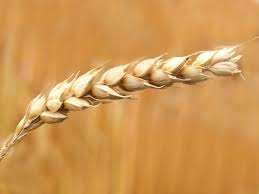Malted Barley Flour is made from barley that is malted (e.g. barley that is allowed to germinate), steam-dried, hulled, then ground and sifted. It is usually made from the species of barley that has six rows of seed to it per head.
Uses
- Used for baking. It is used commercially a great deal in bread, pizza crusts, crackers, rolls, pretzels etc as a dough conditioner — because of its lower gluten, it causes the dough to be softer, more relaxed and gives a softer crumb texture.
Benefits
- Excess cholesterol: It has been proved that the consumption of barley in any form, be it flour, flakes or malted form, helps reduce the total cholesterol level, harmful cholesterol level, as well as triglycerides. Barley consumption has been shown effective in preventing arteriosclerosis, which leads to coronary disease.
- Digestive disorders: Barley in the form of flour, malt and pearl, are highly recommended in cases of:
- Indigestion (Gastritis dyspepsia)
- Gastroduodenal ulcer
- Colitis
- Gastroenteritis
- Intestinal disorders: Barley helps prevent certain intestinal disorders. For example, the fiber present in barley helps prevent constipation and its complications.
- Diabetes: An experiment conducted with diabetic laboratory animals showed that ” those animals that were fed barley showed a lower glucose level than those fed on wheat “. This property of barley is still being investigated in the laboratory.
Cautions
n/a
Interactions
Please consult with your doctor.
Other names
n/a
References
Source: Foodanddiseases, http://foodsanddiseases.com/barley-malt-properties-and-health-benefits-medicinal-uses/
Cooksinfo, http://www.cooksinfo.com/malted-barley-flour

